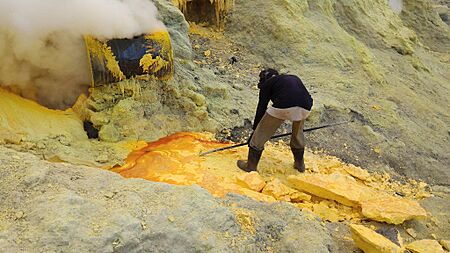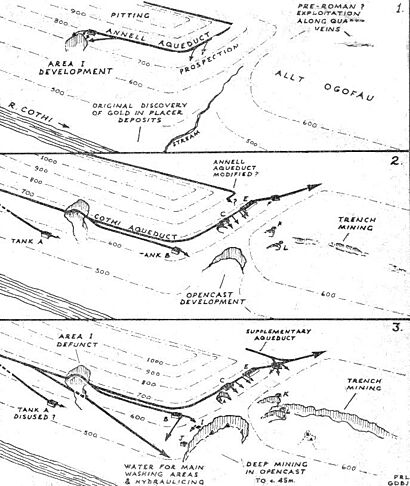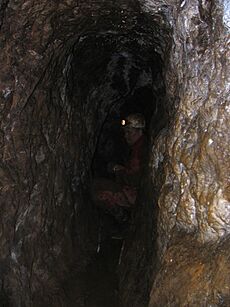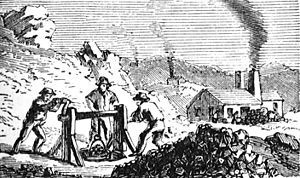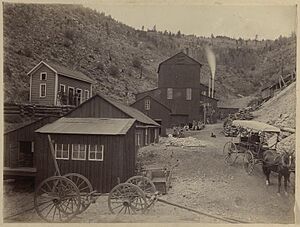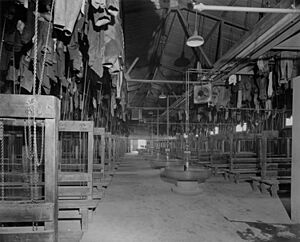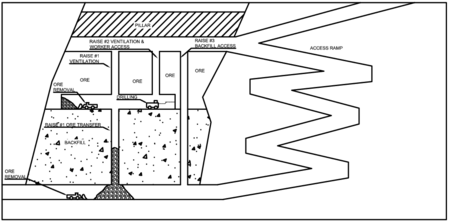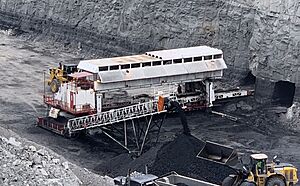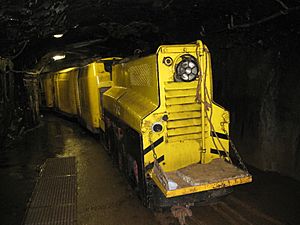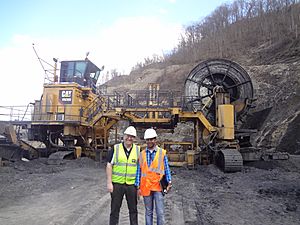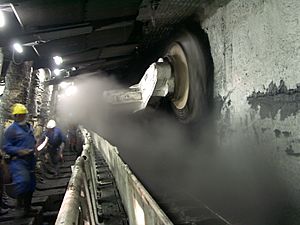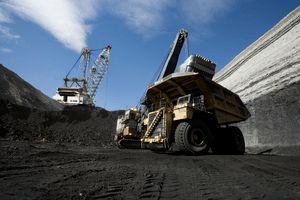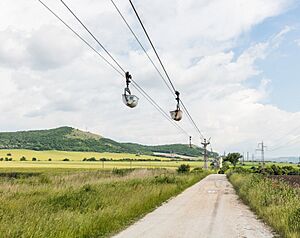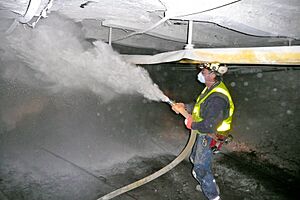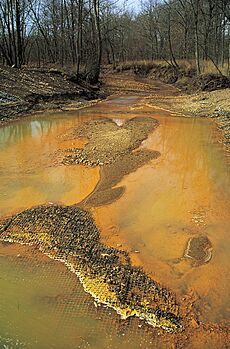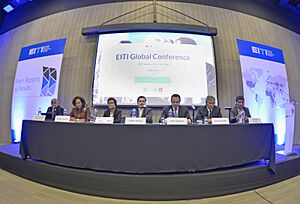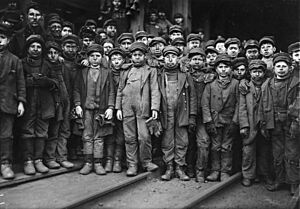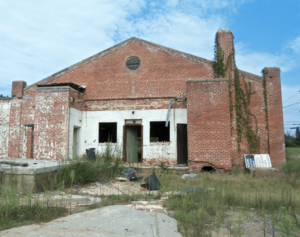Mining facts for kids
Mining is the process of extracting useful materials from the Earth. Since we cannot grow things like metals or rocks on a farm, we must dig them out of the ground. These materials are called ores or minerals.
Mining gives us the raw materials needed to build almost everything in our modern world. This includes the metals used in smartphones and cars, coal for energy, limestone for cement, and even rock salt for food. Mining also includes drilling for petroleum (oil) and natural gas.
To get these materials, miners use different methods depending on where the minerals are located. Some mines are deep underground, while others are large pits on the surface. After the valuable rocks are removed, the land usually needs to be restored or "reclaimed" so it can be used for nature or parks again.
Contents
History of Mining
People have been digging into the Earth for thousands of years. The history of mining shows how technology has changed from simple stone tools to massive machines.
Ancient Times
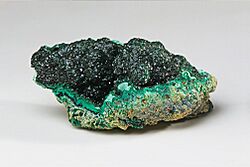
The oldest known mine is the Ngwenya Mine in Eswatini (Swaziland). Scientists believe people mined there about 43,000 years ago to get hematite, a mineral used to make a red pigment called ochre.
In Ancient Egypt, miners dug for malachite, a bright green stone used for decorations and pottery. They also mined gold in a region called Nubia. The Egyptians learned how to crush rocks into powder to wash out the gold dust.
The Roman Empire
The Romans were famous for their advanced engineering. They built large channels called aqueducts to carry water to their mines. They used the water to wash away soil and reveal the rocks underneath, a method called hydraulic mining.
Romans also used a technique called fire-setting. They would build a fire against a rock wall to heat it up, then splash it with cold water. The sudden temperature change caused the rock to crack, making it easier to remove. They mined gold, silver, lead, and tin across their empire, including in Spain and Great Britain.
Medieval Mining
In the Middle Ages, people needed more iron to make armor, weapons, and horseshoes for knights. They also mined copper and silver for coins.
During this time, miners started using water mills to power machines that crushed ore or pumped water out of deep tunnels. In 1627, miners in what is now Slovakia used black powder (explosives) for the first time to blast through hard rock. This was much faster than fire-setting.
A scholar named Georgius Agricola wrote a very important book in 1556 called De re metallica. It described how to find minerals, build mine shafts, and smelt metals.
The Americas and Gold Rushes
Indigenous peoples in North America mined copper near Lake Superior at least 5,000 years ago. They used it to make tools and arrowheads.
In the 19th century, mining helped the United States expand westward. The California Gold Rush of 1849 brought thousands of people to the West Coast hoping to get rich. Mining towns like Denver and Sacramento grew into major cities.
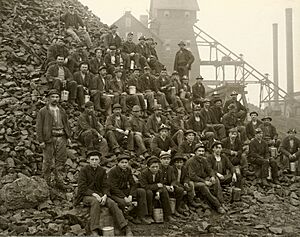
How Mining Works
Before mining begins, geologists must find the minerals. This is called prospecting. They use science and special tools to estimate how much valuable material is underground. If there is enough ore to make a profit, the mining company will design the mine.
There are two main ways to mine: from the surface or underground.
Surface Mining

Surface mining is used when minerals are close to the ground. It is the most common type of mining today.
- Open-pit mining: Machines dig a giant hole to remove the ore.
- Quarrying: This is used to dig out building materials like sand, gravel, and stone.
- Strip mining: Layers of soil and rock are removed in strips to reach the minerals underneath.
Underground Mining
When minerals are buried deep inside the Earth, miners dig tunnels to reach them.
- Shafts: Vertical tunnels that go straight down, like an elevator.
- Drifts: Horizontal tunnels that follow the mineral vein.
- Room and pillar: Miners dig out "rooms" of ore but leave columns (pillars) of rock to hold up the roof.
Machines and Technology
Mining uses some of the biggest machines on Earth.
- Excavators: These machines scoop up huge amounts of dirt and rock.
- Haul Trucks: These trucks are as tall as a house and can carry hundreds of tons of rock.
- Drills: Large drills bore holes into rock so explosives can be placed inside.
- Crushers: These machines grind big rocks into smaller pieces for processing.
Processing Minerals
Once ore is taken out of the ground, it is usually mixed with waste rock. The valuable mineral must be separated.
- Crushing: The rock is ground into a fine powder.
- Separation: Chemicals, water, or magnets are used to pull the metal away from the waste.
- Smelting: The concentrated ore is heated to very high temperatures to melt the metal and remove impurities.
Safety and Environment
Mining can be dangerous and can harm the environment, so there are many rules to make it safer and cleaner.
Keeping Miners Safe
In the past, mining was very risky. Tunnels could collapse, and dangerous gases could build up. Today, safety is a top priority.
- Ventilation: Giant fans pump fresh air into underground mines.
- Gear: Miners wear helmets, lights, and breathing equipment.
- Technology: Robots and remote-controlled machines are used in the most dangerous areas.
Despite these improvements, accidents can still happen. Governments and companies work together to enforce strict safety laws to protect workers.
Protecting the Earth
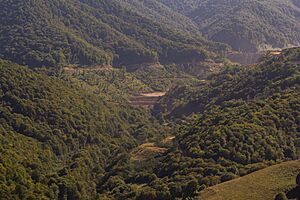
Mining can affect the land and water.
- Tailings: This is the waste material left over after the valuable mineral is removed. It is often stored in large ponds. If not managed correctly, it can leak and pollute rivers.
- Reclamation: After a mine closes, the company must fix the land. This involves filling in pits, planting trees, and making sure the water is clean.
Fairness and Communities
Mining often happens near towns or on land belonging to Indigenous peoples. It is important that these communities are treated fairly.
- Human Rights: Everyone deserves to work in safe conditions and be paid fairly. International laws try to prevent bad practices.
- Child Labor: In some parts of the world, children are forced to work in mines. This is illegal and dangerous. Many organizations are working to stop this and ensure children go to school instead.
- Conflict Resources: Sometimes, minerals are sold to fund wars. These are called "conflict minerals." Systems like the Kimberley Process help buyers know their diamonds and minerals come from peaceful sources.
World Records
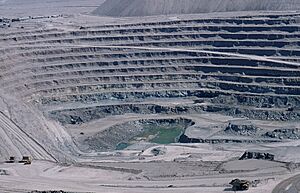
Mining has created some amazing structures and statistics.
- Deepest Mine: The Mponeng Gold Mine in South Africa goes about 4 kilometers (2.5 miles) deep. It takes over an hour to travel from the surface to the bottom!
- Biggest Pit: The Bingham Canyon Mine in Utah, USA, is over 1.2 kilometers (0.75 miles) deep and 4 kilometers wide. It is visible from space.
- Largest Underground Mine: The Kiruna Mine in Sweden has hundreds of kilometers of underground roads.
Recycling and the Future
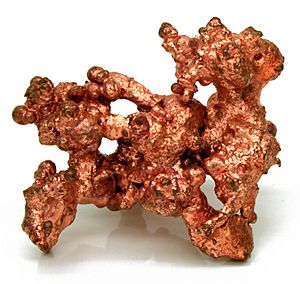
Minerals are a non-renewable resource, which means they will eventually run out. Recycling is a great way to help.
- Urban Mining: This means getting metals from old electronics like phones and computers instead of digging them from the ground.
- Saving Energy: Recycling aluminum cans uses 95% less energy than making new aluminum from rocks.
As technology improves, we might even mine old landfills to recover metals that were thrown away years ago.
Images for kids
-
The Särkijärvi pit of the apatite mine in Finland.
-
The Bingham Canyon Mine, a massive copper mine in Utah.
See also
 In Spanish: Minería para niños
In Spanish: Minería para niños
- Asteroid mining
- Deep sea mining
- Geological engineering
- Mining engineering
- Resource extraction
- Stone industry


